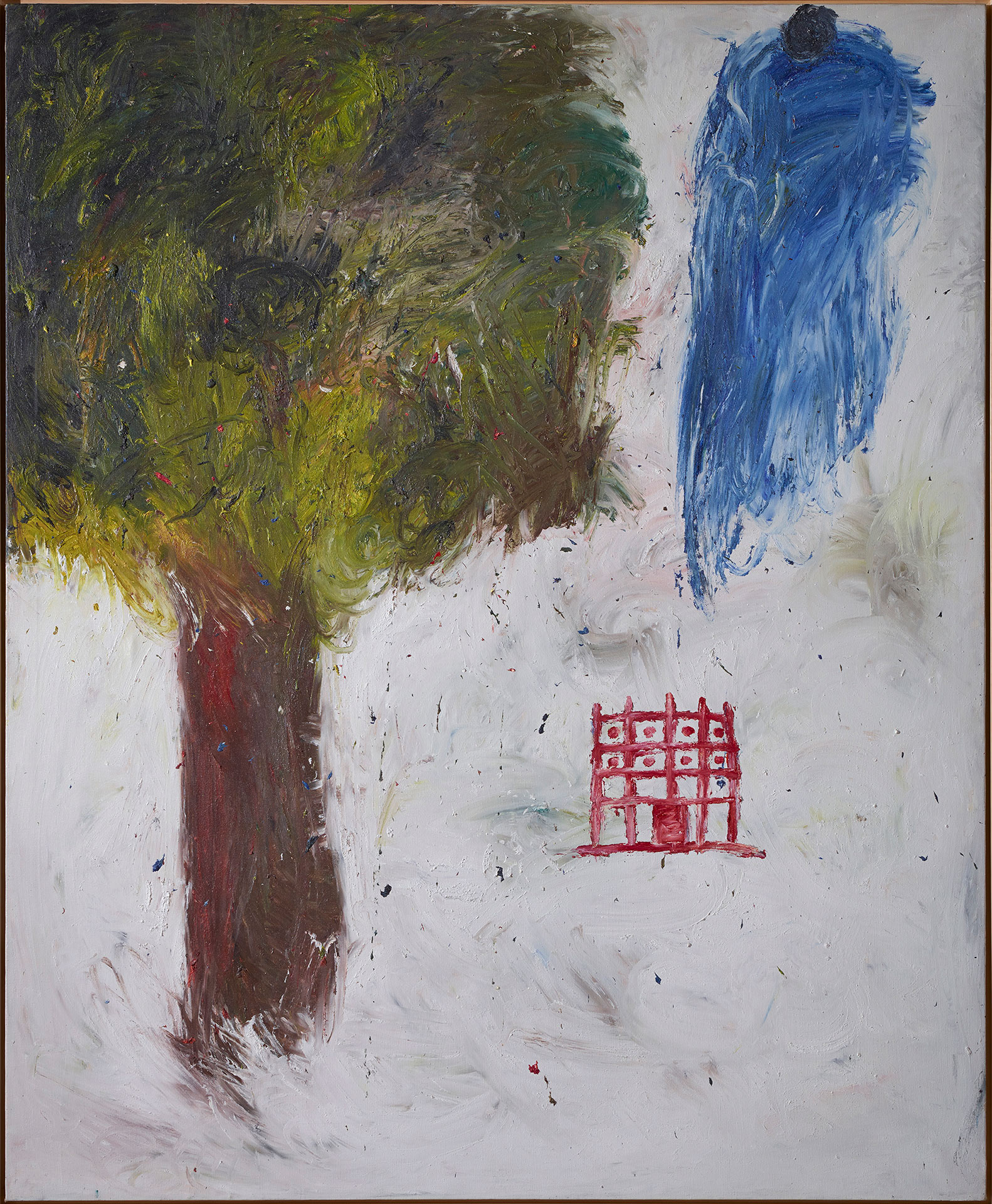
Ferrán García Sevilla (Palma de Mallorca, 1949)
Ocla 3
1983
WORK INFORMATION
Oil on canvas, 195 × 160 cm
OTHER INFORMATION
Signed on the back, with an inscription on the stretcher: "Ocla 3"
Ferrán García Sevilla belongs to the generation of artists who, in the late 1970s and early 1980s, turned their attention to a style known as "painting-painting". He completed a BA in History and a PhD in Art History at the University of Barcelona alongside Alexandre Cirici. With Cirici he discovered the latest international trends and gained access to the journals sent to the Art History and Philosophy departments. He eventually became a teacher in the Faculties of History and Fine Arts in the Catalan capital. In the early 1970s he began his creative career in the sphere of conceptual art, producing critical, experimental works. Interested in art theory, aesthetics and sociolinguistics, his unique approach set him somewhat apart from the paths followed by other conceptual artists. For García Sevilla, the most important thing to reflect upon was art itself and the possibilities of painting as a specific language and form of knowledge. His curiosity about the limits of words and images, of what can and cannot be said in conventional language, has always been an active component of his work.
His first solo shows were held around that time in Palma, in Barcelona and at the Goethe-Institut in Madrid, but it was not until after the group exhibition Muermos, held at Barcelona's Galería G in 1977, that García Sevilla returned to painting and gave up his conceptual creation, though without renouncing its theoretical tenets. From that moment on, his painting was formulated as an unrestrained call for freedom, giving pride of place to a wide range of images: figures, signs and graphic elements or phrases, freely associated and spontaneously sketched. Rejecting any hint of technical virtuosity in favour of an overflowing, overwhelming style of painting animated by a very unique pictorial energy, his work is steeped in irony, sensations and provocative hieroglyphics.
In 1983 he began to exhibit abroad and became a recognised leader of the "return to painting" in the 1980s, in Spain (his generation included Quejido, Albacete and Navarro Baldeweg) and in international circles (his work has been compared to that of Penck, Basquiat and Baselitz).
Ocla 3 attests to his new pictorial formats and the application of thick, rapid brushstrokes to create surface textures. The background is fertile soil, "a physical and symbolic territory with its own identity", as the artist wrote in 1979. In it he inserted three elements: a large tree, a blue stain and a schematic building similar to the imaginary structures that appear in other paintings and drawings from those years, such as Cora 1 and La ciudad del sol y de la luna [The City of the Sun and the Moon]. Like ideograms, these three figures may be the result of deconstructing a landscape, but in García Sevilla's hands they are activated more as forms with multiple meanings, leaving it up to us to assign them meaning or simply accept them as formal concretions that emerged in the process of making the painting. Yet the finished picture is just one stage in the lengthy process of projecting forms from the artist's rich stock of imagery, conveyed here by Neo-Expressionist methods. In this process, García Sevilla's extensive theoretical training seems to retreat before the act of painting, as if it were loathe to interfere in the immediacy of applying the paint, as if the paint could say things that language and theory can never hope to express. This dual, seemingly paradoxical component continues to fuel García Sevilla's painting today, although in his later work he has made room for new reflections on science and religions, especially Tantrism, eastern cultures and cosmology. [Carmen Bernárdez]

